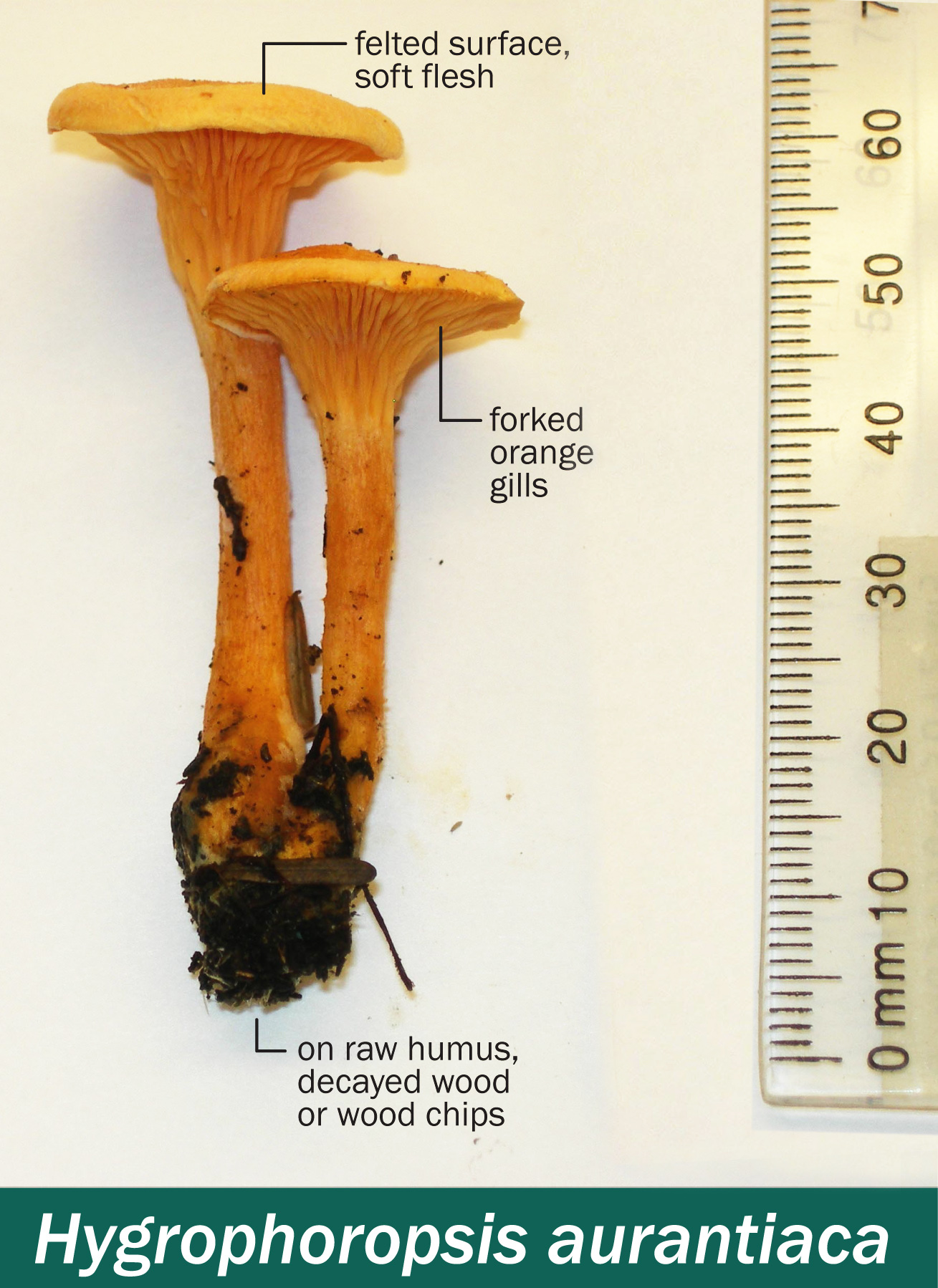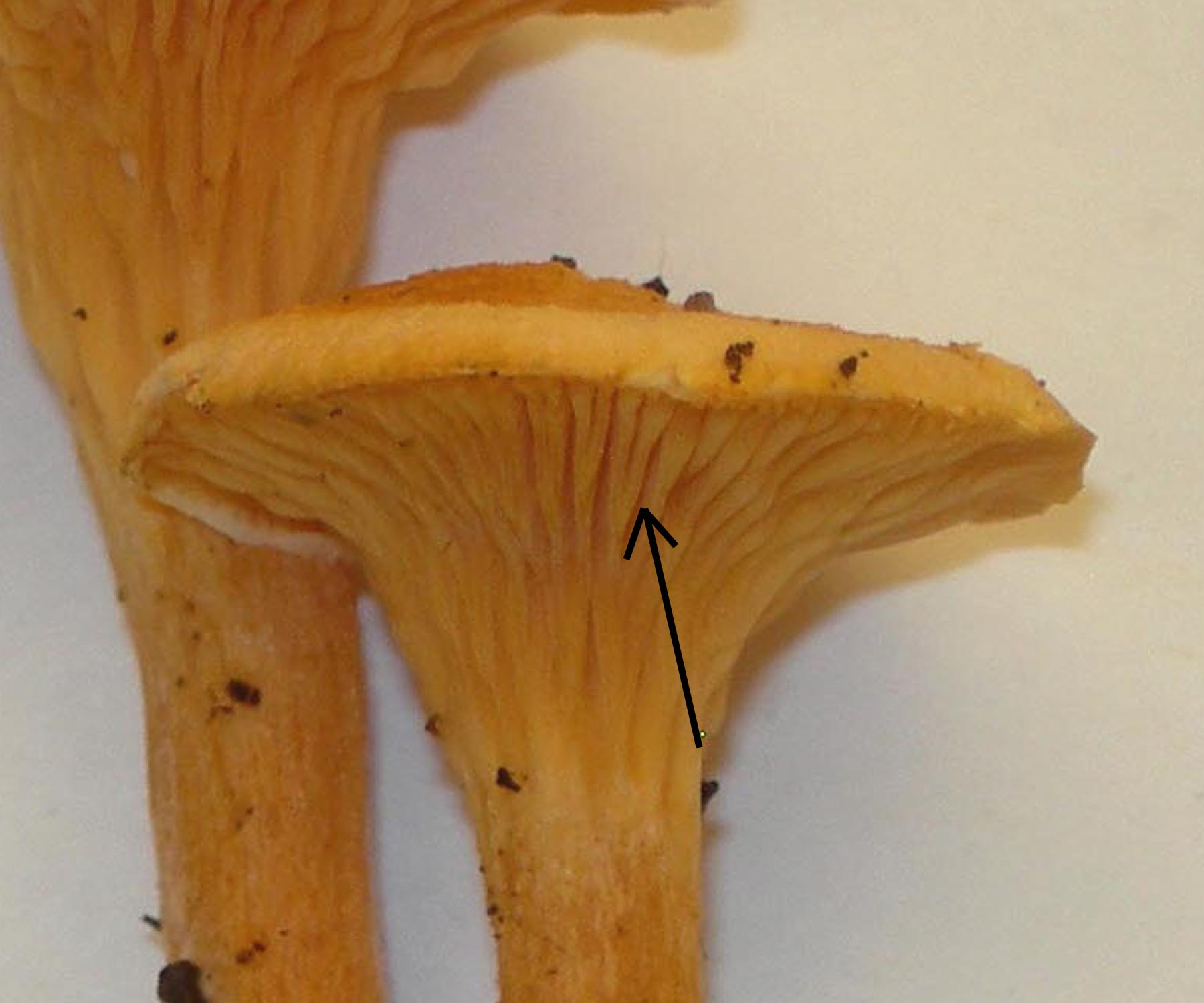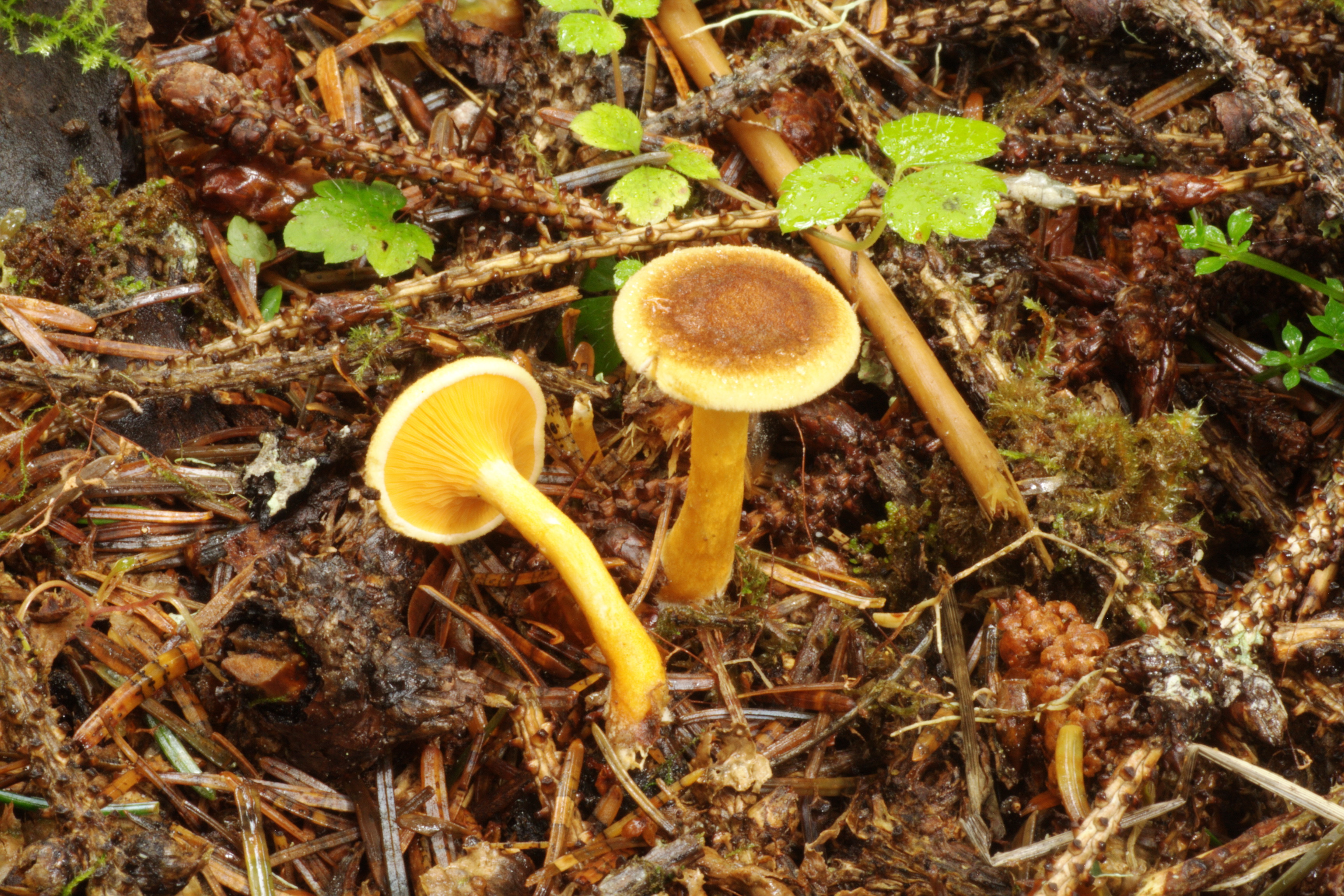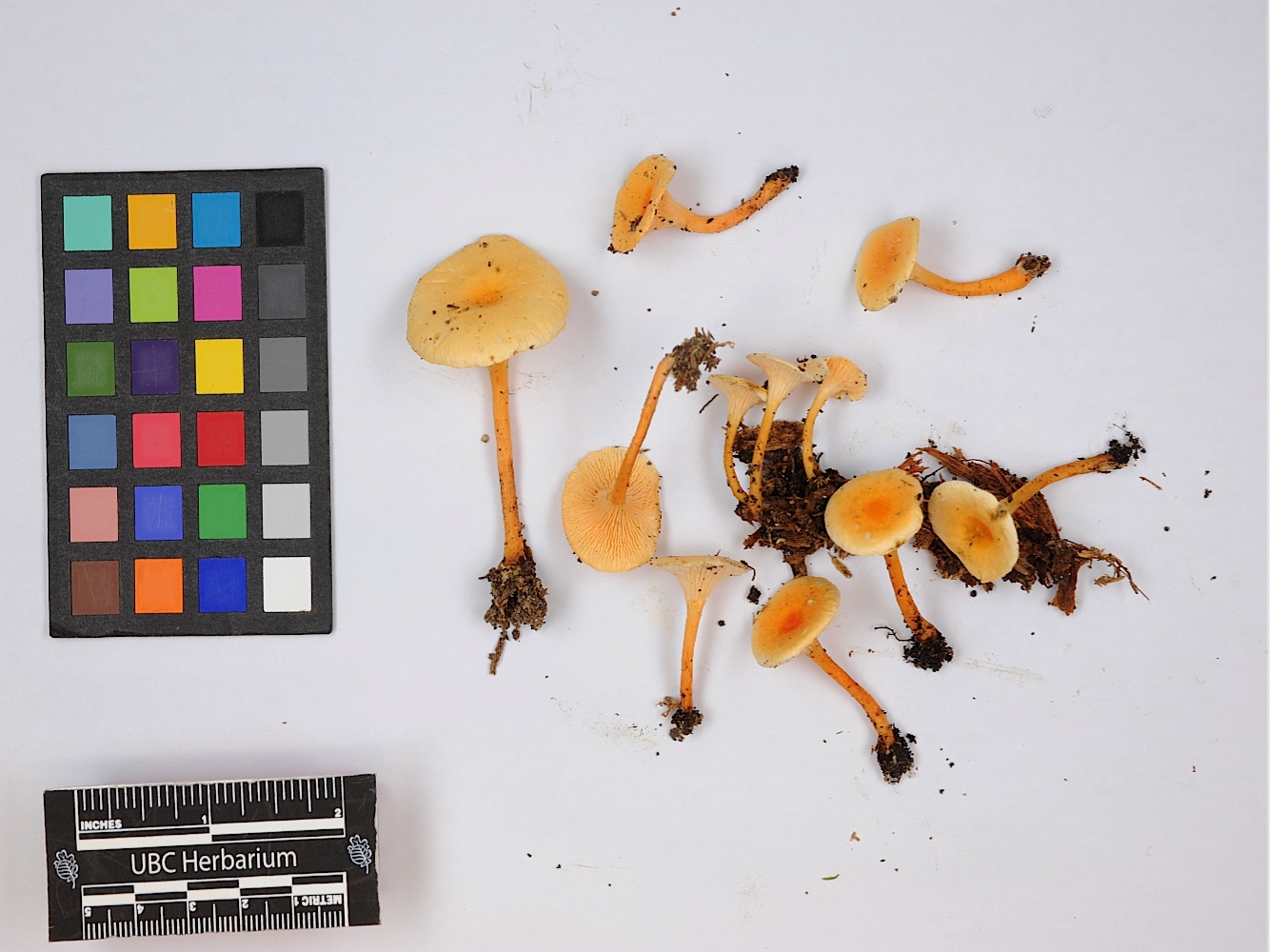Hygrophoropsis aurantiaca — False chanterelle
Odour: Indistinct to slightly sweet.
Cap: 2–9 cm in diameter. The cap has a central depression and the margin is inrolled towards the gills. It becomes funnel-shaped with age. The colour is variable, most often a deep orange with brown centre. Lighter variants occur. The surface is felted. The flesh of the cap is soft and pliable.
Gills: Crowded or moderately close, decurrent. The gills repeatedly fork into two and are usually wavy. The colour is bright orange.
Stem: 2–7 cm long x 0.3–1 cm wide, cylindrical or a bit wider at the base. Colour at its top matches the cap, but it is often dark brown to black at the bottom. Becoming hollow.
Ring or veil: None.
Cup: None.
Spores: 6–8 x 3–5 µm, smooth.
Habitat: On coniferous wood: decayed logs and stumps, raw humus in coniferous forests, and wood chips in human environments. Often fruiting during dry spells, when not much else is fruiting. Saprotrophic.
Geographic distribution: Widespread in the Northern Hemisphere.
“True” chanterelles in the genus Cantharellus do not grow on wood, and their gills are shallow, ridge-like veins that are often interconnected by prominent cross veins. Gills of the false chanterelle are thin and they fork without obvious cross veins. In most chanterelles, the gills are yellow to pale yellow in contrast to the orange gills of the false chanterelle. Flesh of false chanterelles is thin. True chanterelle species are fleshy and firm with stringy flesh.
The false chanterelle is similar in colour and shape to the yellowfoot, Craterellus tubaeformis. The yellowfoot's forking veins tend to be thicker, further apart, and lighter in colour than the gills of the false chanterelle. The margin of the yellowfoot's cap is usually distinctly wavy, while the circumference of the false chanterelle's cap is flattish.
Treatment: Contact your regional Poison Control Centre if you or someone you know is ill after eating false chanterelles. Poison centres provide free, expert medical advice 24 hours a day, seven days a week. If possible, save the mushrooms or some of the leftover food containing the mushrooms to help confirm identification.
Poison Control:
British Columbia: 604-682-5050 or 1-800-567-8911.
United States (WA, OR, ID): 1-800-222-1222.




